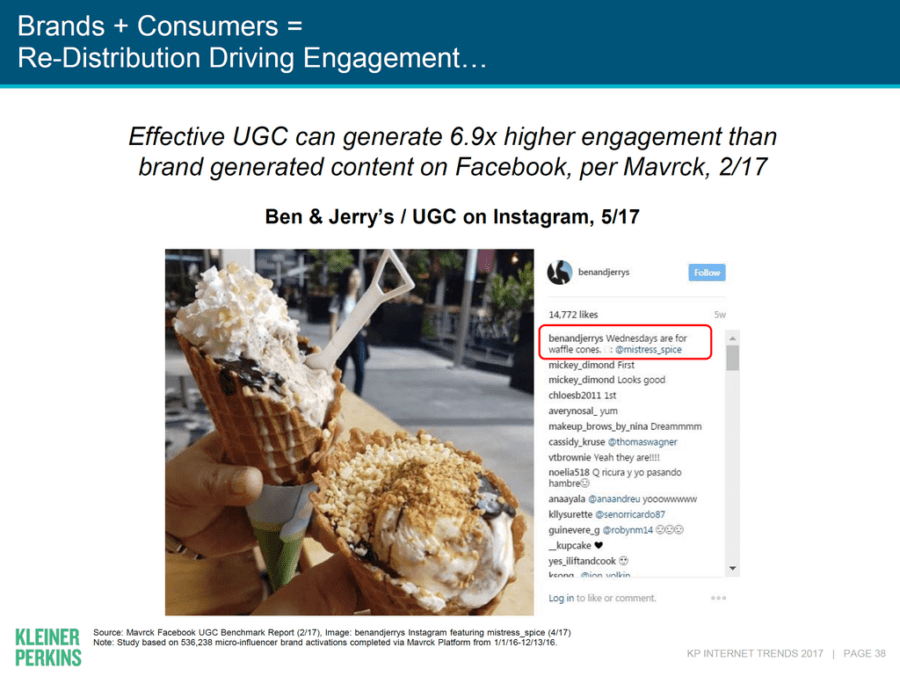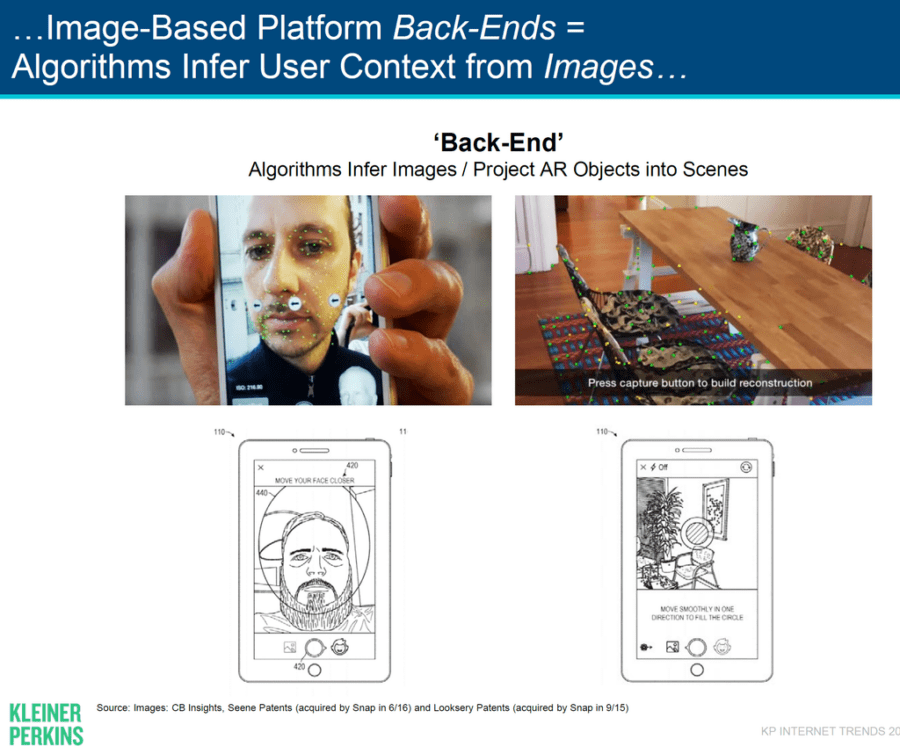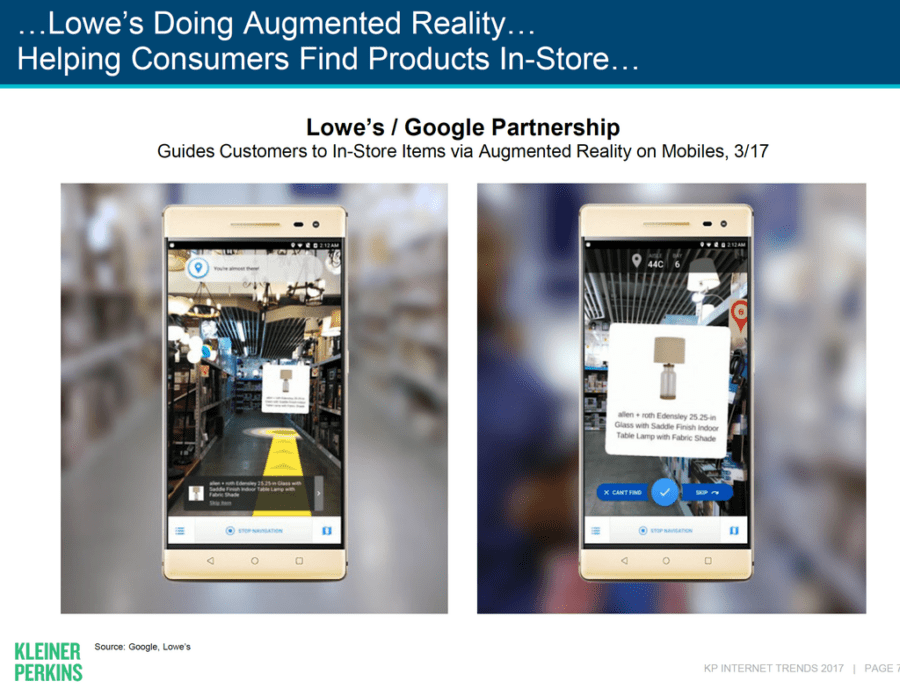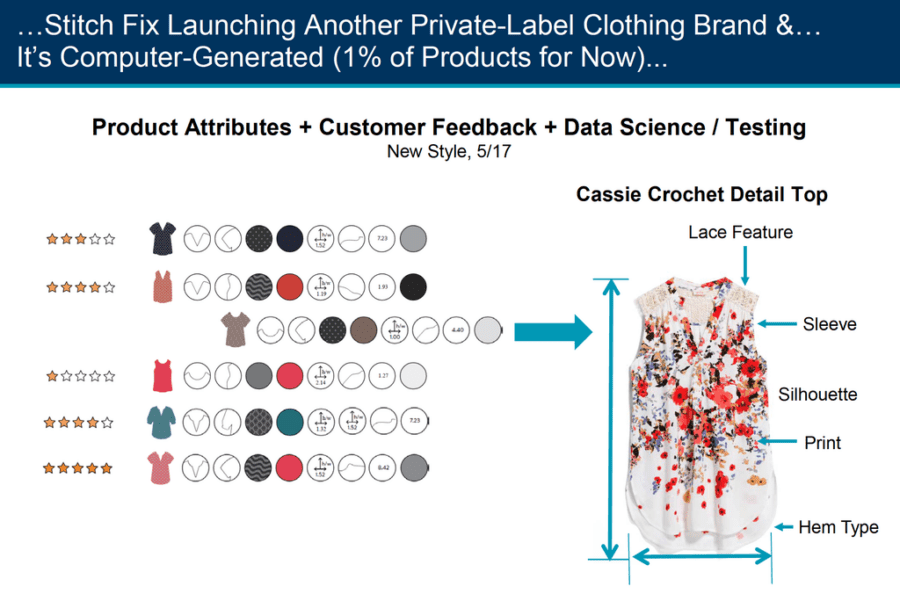Summary: You’d think that the internet was the core of the digital economy but it’s not. Data science is the core without which the digital economy wouldn’t exist and increasingly it’s AI that’s moving the needle in consumer engagement.
 I look forward to this time of year since this is when Mary Meeker, the great interpreter of the internet once again releases her annual Internet Trends 2017 report. Ms. Meeker is a partner in the VC firm Kliener Perkins and is acclaimed by Forbes to be the 77th most powerful woman in the world. She started issuing these reports in 1995 at Morgan Stanley and was and is still widely regarded as a guru of the internet. She gathers and analyzes voluminous amounts of data and has a well deserved track record for spotting big picture trends before they are widely recognized.
I look forward to this time of year since this is when Mary Meeker, the great interpreter of the internet once again releases her annual Internet Trends 2017 report. Ms. Meeker is a partner in the VC firm Kliener Perkins and is acclaimed by Forbes to be the 77th most powerful woman in the world. She started issuing these reports in 1995 at Morgan Stanley and was and is still widely regarded as a guru of the internet. She gathers and analyzes voluminous amounts of data and has a well deserved track record for spotting big picture trends before they are widely recognized.
The bone that I always seem to have with Ms. Meeker is that the way she presents would make you believe that it’s device penetration, persistence, and demographics that are driving our digital economy. Well, fellow practitioners, we know it’s actually data science and the ability to target and influence consumer behavior that is the foundation of all this success.
In prior years Ms. Meeker has never so much as mentioned analytics. This year is a little different, though she has jumped over the most important tools of targeting and recommending, and moved straight to AI.
Three Rules Govern the Digital Economy
If you’ve never seen it explained simply, there are three rules that define how the digital economy works. As you’ll immediately recognize, it wouldn’t exist without Big Data, predictive analytics, and now AI.
Jamers Surowiecki did an excellent job of stating those three basic rules in the June edition of the MIT Technology Review. Here, in abbreviated form, is how he described it.
Network Effect: The first rule is that a product or service becomes more valuable the more people use it. Surowiecki gives this example: “In the classic example of a network effect, a telephone is worthless if only one person has one, since there’s no one to call. If two people have telephones, they now have some value. And if a million people have telephones, the phone network suddenly becomes enormously valuable.”
The more users you have, the easier it is to add more users. Size matters. If you want to connect with people for example, Facebook is the obvious place to start.
Indirect Network Effects: Rule two is that sellers want to be where the buyers are and vice versa. Google, Facebook, and Amazon are dominant today because they understood this. Take Amazon for instance. They didn’t attempt to keep the selling network for themselves. They allowed third party sellers to participate. On the face of it that might seem to be giving away something valuable but they correctly understood that more sellers meant more buyers and also more advertisers.
Access to Enormous Amounts of User Data: This unique transaction, browse, and search data is more detailed, more granular, and in hugely greater quantities than ever before. The data may be the gold but data scientists are the gold miners continuously and incrementally making the user experience better and better. Better experience leads to more users/customers.
This data flywheel effect takes a while to kick in and if you have data and aren’t using it intensively it won’t work. If you understand it however, it’s the most valuable component of the big three rules. It’s why Jeff Bezos explained that in pursuing Whole Foods he wasn’t after their stores, he was after their data.
And just to emphasize how important the data is compared to everything else, Surowiecki goes on to illustrate that it’s the data that makes Tesla’s market cap greater than General Motors. They didn’t just sell you the car, they are constantaly upgrading your experience with over the air updates, and their data includes every turn and every stop you ever made. It’s also the reason that the Big 5: Google, Facebook, Amazon, Apple, and Microsoft are not likely to be unseated from their position of dominance.
Mary Meeker, AI, and the Internet
There are currently 3.4 Billion global internet users out of a population of about 7.4 Billion. Leave aside the 1.6 Billion that are under 12 and you still get a global penetration just short of 60%. Problem is that growth rate is rapidly shrinking into the single digits. So that network effect looks to be slowing down and that puts the emphasis on increasing usage and persistence.
The foundational tools of recommenders, search, and consumer behavior modeling once again get only passing mention. Mostly under the increasingly important goal of right ad + right place + right time. That’s targeting at its most fundamental.
What she does focus on this year is AI. Her observation is that voice is rapidly replacing typing as the user interface of choice on mobile devices. Thanks to Recurrent Neural Nets we passed over that 95% accuracy threshhold about two years ago, so voice almost seems old hat.
It’s in the area of image processing that Ms. Meeker calls out some very interesting examples of how Convolutional Neural Nets have made pictures such an effective part of our internet experience. According to Ben Silbermann, the Founder and CEO of Pinterest, “A lot of future search is going to be about pictures instead of keywords”. Here are a few of the uses that rely on the data science of image processing that may spur you imagination.
User Generated Content – That Picture of Your Meal Can be a Very Effective Ad
Mining both images and text on social media sites like Instagram, advertisers can turn that yummy looking picture you took into an effective enticement for your friends and others.

Search Can Increasingly be Image Based Requiring No Text at All.

Augmented Reality
Augmented Reality which is the ability to project objects, real or imaginary, onto our immediate surroundings is going to be a major force in the digital economy. These are sophisticated back end image processing platforms that can do several things. In this first example the AR back end app projects an image of a vase directly into our own home to help us see if we’d really like it.

And in this second application, we’ve taken or saved a picture of the lamp we want, and AR is guiding us to its exact location in-store.

Image Processing Plus Consumer Input = New Designs
Stitch Fix is a very innovative on-line retailer of women’s clothing that uses a combination of algorthims and human ‘curators’ to send monthly clothing assortments to women on a subscription basis. Having too many items returned for whatever reason is obviously bad for business so they’ve been very diligent in recording each customer’s feedback on every item of clothing.
Originally they bought all of their fashions on the open market but increasingly they are private label manufacturing their own lines to get exactly what they want. And what they create is driven by the images and feedback ratings of each garment. They use the feedback to custom create designs pleasing to their customers.

Finally
The ‘what’s new’ in the internet is much broader than this, but in terms of data science, it’s the AI of voice and image processing that dominate, with image being the newest frontier.
Take a bow Data Scientists. Without you these trends would never come to be.
About the author: Bill Vorhies is Editorial Director for Data Science Central and has practiced as a data scientist and commercial predictive modeler since 2001. He can be reached at:
